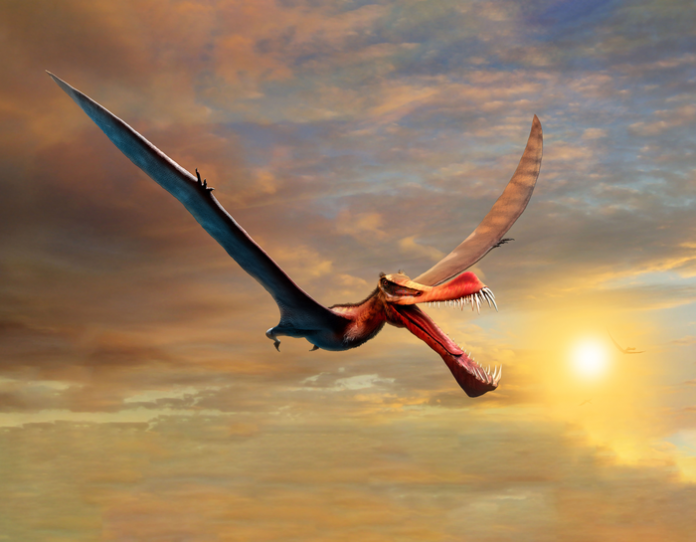Researchers from the University of Queensland have discovered Australia’s largest flying reptile, a pterosaur, which has been named the Thapunngaka shawi
University of Queensland PhD candidate Tim Richards, from the Dinosaur Lab, led a research team that analysed a fossil of the creature’s jaw, found in a quarry just northwest of Richmond in June 2011 by Len Shaw, a local fossicker.
The new species belonged to a group of pterosaurs known as anhanguerians and is only the third species of anhanguerian pterosaur known from Australia.
The pterosaur, which has been named the Thapunngaka shawi, had an estimated wingspan of seven metres, around 40 teeth and a skull of just over one metre long.
‘Real-life dragon’
“It’s the closest thing we have to a real-life dragon,” Mr Richards said. “The new pterosaur, which we named Thapunngaka shawi, would have been a fearsome beast, with a spear-like mouth and a wingspan around seven metres.
“It was essentially just a skull with a long neck, bolted on a pair of long wings. This thing would have been quite savage. It would have cast a great shadow over some quivering little dinosaur that wouldn’t have heard it until it was too late.
“It’s tempting to think it may have swooped like a magpie during mating season, making your local magpie swoop look pretty trivial – no amount of zip ties would have saved you.
“Though, to be clear, it was nothing like a bird, or even a bat – Pterosaurs were a successful and diverse group of reptiles – the very first back-boned animals to take a stab at powered flight.
“It’s quite amazing fossils of these animals exist at all. By world standards, the Australian pterosaur record is poor, but the discovery of Thapunngaka contributes greatly to our understanding of Australian pterosaur diversity.”
Dr Steve Salisbury, co-author on the paper and Mr Richard’s PhD supervisor, said: “The genus name, Thapunngaka, incorporates thapun [ta-boon] and ngaka [nga-ga], the Wanamara words for ‘spear’ and ‘mouth’, respectively,” Dr Salisbury said.
“The species name, shawi, honours the fossil’s discoverer Len Shaw, so the name means ‘Shaw’s spear mouth’.”
The research has been published in the Journal of Vertebrate Paleontology.











